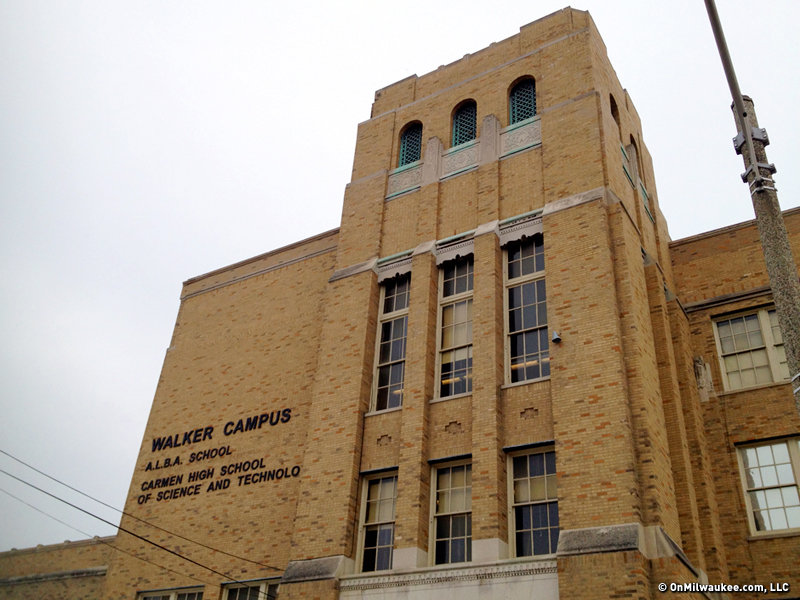The opinions expressed in this piece do not necessarily reflect the opinions of OnMilwaukee.com, its advertisers or editorial staff.
Last week, the Washington Post issued its annual ranking of the best high schools in every state around the country. The Milwaukee Public Schools, with six high schools making the cut, including the top two spots in Wisconsin and three of the top 10.
They are, with their Wisconsin ranking, Carmen High School of Science and Technology, South Campus (1), Ronald Reagan College Preparatory High School (2), Rufus King International High School (6), Milwaukee School of Languages (20), Riverside University High School (29) and Milwaukee High School of the Arts (35).
That is pretty awesome. It's also not surprising; Carmen, Reagan and King almost always seem to end up on these kinds of lists (they made US News and World Reports' top ten for Wisconsin in 2014, for example), and for many years, MSL, Riverside, and Arts have been widely respected for their quality programs. Indeed, before Reagan and Carmen came along, Riverside was almost always a top-10 school itself.
Without question, these six schools are good schools that any parent would be proud to send their children to.
But here's a thing: Two of the schools on the Washington Post's list also made a different list, the Wisconsin Department of Public Instruction's list of the worst schools in the state.
As Dave Barry used to say, I am not making this up. Both Riverside and Arts, by anyone's estimation two of the best schools in the city, were labeled as "fails to meet expectations," the lowest rating level, on the state's school report cards when they were issued last fall.
That is, both the Washington Post and the state of Wisconsin looked at the same schools in the same school year (2013-14) and reached completely different conclusions about their quality.
Obviously, this raises some questions about methodology. One or both of these measures must be insufficient if they produce such contradictory results, and it does make you wonder whether the state report cards can or do tell the whole story of a school when it applies a single number or a single label.
It's easy to see where the Washington Post may be going astray. It used a very, very blunt calculation, taking the number of International Baccalaureate or Advanced Placement exams taken at the school by the number of graduating seniors. No weight is given to how well those students do on those exams, just simply how many were taken.
To be sure, taking an AP or IB class and its exam is not easy (I did both in high school, and I have taught in both programs as well), so this measure is not the worst possible proxy for how well a school actually does at teaching its students. But it is probably not the best.
Still, if you want to be more complicated about making a school-rankings list, you could. US News takes AP and IB results into account, for example. Newsweek does an even more thorough vetting of schools in its rankings now, and not a single MPS school made the top 500 nationally in the most recent list, not even the six that made the Post list.
A list like Newsweek's, which takes into account how well a school does compared to how it is expected to do with its student population, maybe comes closer to the state's list. That's because the state uses some so-called "value-added" measures to try to ferret out whether a school with students who start far behind grade level is making good progress, even if it can't get those students to grade level in a single year.
But insufficient academic progress wasn't the problem DPI identified for Riverside and Arts this past year. Both schools were penalized on their 2013-14 report cards for, instead, insufficient test participation. Both schools met the test participation goal – 95% of students have to take the state test--the year before, and if both schools had met the participation goal last year, they would have been spared the "fails to meet expectations" label.
Riverside, in particular, ticked up in every single other measure on the 2013-14 report card from the year before, and only declined in its test participation rate. How is the state's "fails to meet expectations" even remotely a trustworthy label then?
You can see the report cards for every Wisconsin public school, and every Wisconsin public school district, at the DPI's website.
I write about all this not simply because the release of the Washington Post's list offers a convenient jumping-off point, but because there's a bunch of other news out there today that directly relates.
One obvious one is that the state right now is reconsidering the state tests, the Smarter Balanced Assessment for grades 3-8 that we have branded the Badger Exam. Challenges in its roll-out (what? version 1.0 of a complicated thing has problems? I don't believe it!), from availability delays to questions of basic functionality, have upset lawmakers, leading Wisconsin's Assembly Speaker Robin Vos to call the test a "rip-off." It may not be counted in this year's report cards or even administered at all in subsequent years.
And then there's the growing opt-out movement, in which parents opt their children out of taking the mandated state tests. This is not supposed to affect a school's score on the state report cards; opt-out students are not counted in the calculation of a school's 95% participation rate.
But consider who is most likely to opt out of the tests: parents and students with enough political and social awareness not only to see that opting out is an option but to go through the process of securing the opt-out to begin with. This self-selected group is likely to comprise the students who can be most successful on the tests, leaving behind a pool of students whose collective scores are probably much lower than they might otherwise have been.
And even though the opt-out students don't count against a school's participation rate, those kids are also the ones most likely to be at school to take the test in the first place, meaning the low-scoring pool of students left behind is also probably going to have a much lower participation rate.
What that means, at least from where I sit, is that the gap between how the state ranks schools and how outside groups like US News or the Washington Post rank schools is going to continue, and maybe even get worse. Perfectly good schools are going to keep getting labeled as "fails to meet expectations," and that will have consequences.
Though it doesn't seem like there will be a "school accountability bill" this year, there is still a chance that some kind of "recovery district" will be proposed for the Milwaukee Public Schools.
One version of such an idea put forward by legislators this year would take schools from the "fail to meet expectations" list and turn them (the buildings and the students) over to private charter school operators. This will include for-profit operators, letting your tax dollars and mine line the pockets of out-of-state CEOs and investors rather than educate children here.
While the first schools to be privatized will probably not be Riverside and Arts, the justification used against whatever schools are given away first could just as easily be applied to them. Failure is failure, after all, an open door for someone to profit off our children.
Even if we can all agree the school is doing a great job.







